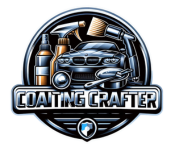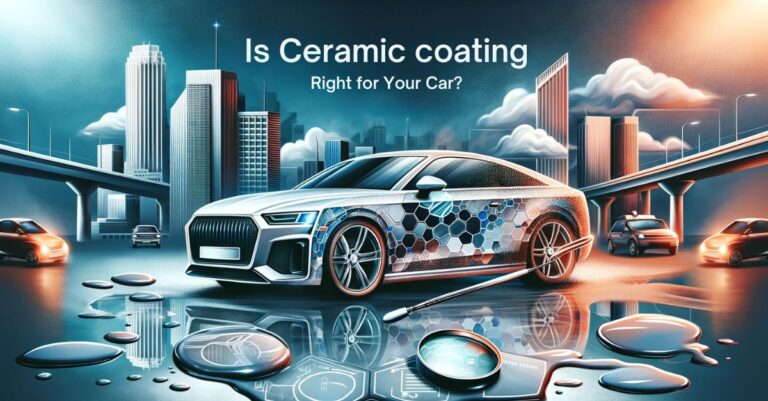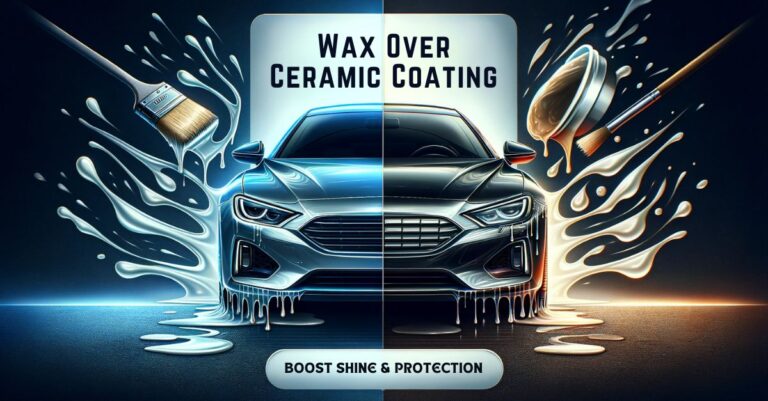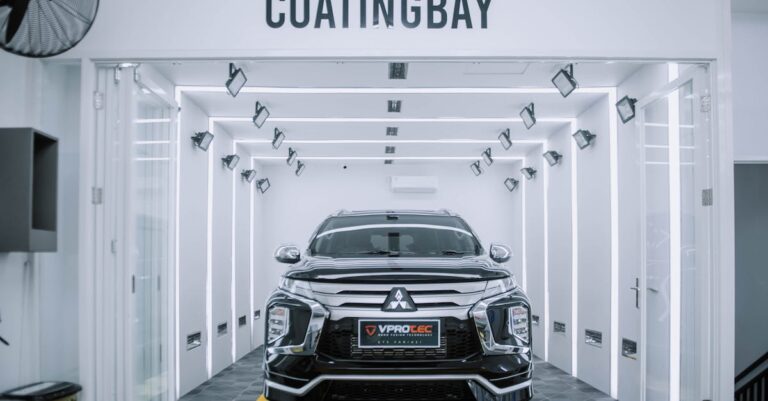Are Ceramic Coatings Scratch Proof? Exploring the Truth
When we talk about protecting our vehicle’s paint, ceramic coatings often come up as a modern-day armor. It’s touted for its ability to keep cars looking pristine, but are these coatings really the invincible shield they’re made out to be? We’re about to dive into the nitty-gritty of ceramic coatings and their resistance to scratches.
It’s a common belief that once you’ve got your car coated, it’s impervious to any kind of damage. But let’s be real, is anything truly scratch-proof? We’ll explore the science behind ceramic coatings and what they can (and can’t) do for your car’s exterior.
What Are Ceramic Coatings?
When we delve into the world of automotive protection, ceramic coatings stand out as an innovative product touted for their long-lasting benefits. Born from chemical engineering, these coatings are liquid polymers derived from silicon dioxide (SiO2), commonly sourced from natural materials such as quartz and sand.
How they work is rather fascinating. Once applied to a vehicle’s surface, ceramic coatings bond chemically with the factory paint. This seamless bonding process results in a rigid, transparent layer that adds a measure of durability and hydrophobic properties to the car’s exterior.
The key characteristics of ceramic coatings include:
- High-gloss finish that enhances the vehicle’s appearance
- Superior protection against UV rays, which can cause fading and oxidation
- Impressive water-repelling (hydrophobic) capabilities, leading to easier cleaning
- Resilience to chemical stains and etching from acidic contaminants
These coatings provide a semi-permanent or permanent shield, drastically reducing the need for regular waxing. Their longevity typically spans several years, depending on the quality of the product and the maintenance habits of the car owner.
To give you a clearer picture, let’s talk numbers. The hardness of these coatings can be measured on the Mohs scale, where they generally rate between 2-9 out of 10, depending on the composition and quality of the coating. Below is a simplified rating scale for reference:
| Coating Type | Mohs Hardness Rating |
|---|---|
| Entry-level | 2-4 |
| Professional grade | 5-7 |
| Top-tier products | 8-9 |
Bear in mind, while the added hardness does impart increased resistance to minor scratches and scuffs, it isn’t invincible. Harsh abrasions or automated car washes with abrasive brushes could still mar the surface. It’s vital to temper expectations and understand that even with a ceramic coating, some care and maintenance are necessary to preserve the integrity of your vehicle’s exterior.
Understanding the Science Behind Ceramic Coatings
When diving into the science of ceramic coatings, it’s vital to understand the core elements at play. The primary ingredient, silicon dioxide, comes from natural materials like quartz and sand. Upon application, this compound fuses with the surface paint of a vehicle at a molecular level, essentially becoming a part of the vehicle’s paint system.
This fusion creates a semi-permanent bond. Unlike wax that simply sits atop the paint, the bond formed by ceramic coatings ensures a longer-lasting protection. It’s like a shield that’s much harder to break down or wash away, enduring various environmental factors that typical car paints can’t handle alone.
Another scientific aspect of ceramic coatings is their nanotechnology. On a microscopic level, the coating fills in any pores within the paint, leaving a smooth, even surface. This technology helps to prevent dirt, grime, and water from clinging to the vehicle’s surface. The result is not just impressive visual appeal but also a functional barrier that helps mitigate damage from minor abrasions.
We also can’t overlook the hydrophobic properties of ceramic coatings. Water simply beads up and rolls off the coated surface, which isn’t just satisfying to watch but also practical. By repelling water so effectively, it minimizes the risk of water spots and the accumulation of minerals that can damage the paint over time.
Finally, let’s touch on the hardness factor. As mentioned earlier, ceramic coatings have varying levels on the Mohs scale. The following table illustrates the typical hardness ratings for ceramic coatings:
| Hardness Rating (Mohs scale) | Implication for Vehicle Paint |
|---|---|
| 2-4 | Offers a basic level of protection |
| 5-6 | Provides durable protection |
| 7-9 | Premium hardness and resilience |
It’s important to remember these ratings are a general guide. The actual resistance to scratching depends not only on the hardness but also on external circumstances and the quality of the application. Proper maintenance plays its part in preserving the coating’s integrity over time.
Debunking the Myth of Scratch-Proof Coatings
When it comes to ceramic coatings, there’s a widespread belief that these layers offer an impenetrable shield against all types of scratches. We’re here to clarify that while ceramic coatings do provide a tough layer of protection, they are not fully scratch-proof. The myth of a completely scratch-resistant surface has been perpetuated by overzealous marketing, but it’s crucial for vehicle owners to understand the real capabilities and limits of this technology.
Ceramic coatings offer enhanced scratch resistance due to their hard nature, but their effectiveness largely depends on the thickness and quality of the coating applied. Extreme conditions or sharp objects can still inflict damage on the vehicle’s surface. The coatings are designed to protect against minor abrasions, such as those from washing or light debris but are not impervious to deeper scratches.
Furthermore, external factors play a significant role in the performance of ceramic coatings. A car exposed to harsh environments or abrasive contaminants may require more frequent inspections to ensure the coating’s effectiveness. Our exploration of the subject reveals that:
- Ceramic coatings provide additional protection but are not a foolproof solution to scratching.
- The lifespan of a coating can be impacted by various environmental factors and the care regime maintained by the owner.
Vigilant maintenance and proper washing techniques can extend the effectiveness of ceramic coatings, making them a valuable investment for preserving your vehicle’s appearance. It’s also worth noting that some minor scratches that do occur may only be in the coating itself, which can be addressed with a maintenance layer, rather than reaching the actual paint.
To maximize the benefits of ceramic coatings, we recommend the following practices:
- Regular washing with gentle, pH-neutral soap to prevent dirt buildup
- Avoiding automated car washes that can have abrasive brushes
- Using microfiber towels for drying the vehicle to minimize the risk of micro-scratches
Embracing these habits will help to maintain your vehicle’s luster and ensure that your ceramic coating continues to function as a robust barrier against the elements and everyday wear.
By understanding the real capacities of ceramic coatings, we can set realistic expectations and continue to care for our vehicles most effectively.
How Effective Are Ceramic Coatings in Preventing Scratches?
When looking at the effectiveness of ceramic coatings in preventing scratches, it’s crucial to consider the role they play as a protective layer for your vehicle. Ceramic coatings bond with the surface of the car’s paint, creating a hardened barrier. This barrier provides a level of scratch resistance that surpasses that of traditional wax or sealants.
The hydrophobic properties of ceramic coatings also mean that most contaminants, such as dirt and grime, can’t easily stick to the surface of the vehicle. As a result, these potentially abrasive particles are less likely to cause scratches as they are more easily washed away.
In terms of direct impact protection, consider the following points:
- While a ceramic coating does mitigate minor abrasions, it’s not a shield against all forms of damage.
- Key factors in protection include the hardness of the coating and the maintenance practices followed by the vehicle owner.
- A well-applied ceramic layer will reduce the severity of swirl marks and light scratches that can occur through everyday use.
Research and customer experiences have shown that ceramic coatings can withstand small mishaps that would otherwise leave a mark on untreated paint. For instance, brushes against bushes or the accidental drop of a shopping bag might not result in immediate scratches, thanks to the coating’s properties.
| Aspect of Protection | Level of Effectiveness |
|---|---|
| Minor Abrasions | High |
| Small Impacts and Debris | Moderate to High |
| Severe Scratches and Harsh Impacts | Moderate |
Maintaining the integrity of the ceramic coating involves routine care. We recommend hand washing with a pH-neutral soap and microfiber towels to avoid inflicting scratches. Automated car washes with abrasive brushes are detrimental and can undermine the coating’s efficaciousness.
It’s essential to recognize that while ceramic coatings can significantly reduce the likelihood of scratches, they are not invulnerable. Regular care and mindful use will maximize the lifespan and efficacy of your ceramic coating, keeping your car’s paint in pristine condition for a longer period.
Factors That Can Affect the Scratch Resistance of Ceramic Coatings
Ceramic coatings have revolutionized the car care industry, offering a durability that far exceeds that of conventional waxes and sealants. Though we’ve praised these coatings for their resilience and protective qualities, it’s important to acknowledge the factors that can alter their efficiency in guarding against scratches.
Quality of the Ceramic Coating
The market is oversaturated with various products, and not all ceramic coatings are created equal. The purity and the grade of the product heavily influence its defensive capabilities. Professional-grade coatings typically provide a thicker and harder layer of protection, lessening the risk of swirl marks and minor abrasions.
Application Process
A flawless application is key. This involves thorough cleaning, decontaminating, and proper curing of the coating. Any shortcomings during this phase can lead to a weaker barrier, which will make the ceramic coating more susceptible to damage from external forces.
Maintenance Practices
Post-application, the way we maintain our ceramic-coated vehicles is paramount. Incorrect washing techniques or the use of abrasive materials can degrade the coating. It’s crucial to adhere to the recommended cleaning protocols that often include:
- Using a pH-neutral shampoo
- Applying a soft, microfiber washing mitt
- Following with touchless drying when possible
Environmental Exposures
Vehicles face a gauntlet of environmental challenges, from stone chips at high speeds to prolonged UV exposure. These factors can diminish the integrity of ceramic coatings over time. Regular inspection and occasional reapplication of the coating can help maintain its optimal performance.
Physical Impacts and Abrasive Contacts
Although ceramic coatings are tough, significant physical forces or harsh scraping can cause visible scars that penetrate through to the vehicle’s paintwork. We should remain mindful of these limitations and protect our cars from high-impact scenarios whenever possible.
Understanding that ceramic coatings are not invincible, we adjust our expectations and give our vehicles the care they deserve. Incorporating preventative measures and routine check-ups ensures we extend the longevity and effectiveness of ceramic coatings, keeping our vehicles looking impeccable.
Conclusion
We’ve explored the nuances of ceramic coatings and their ability to resist scratches. It’s clear that while they offer a strong layer of protection, they’re not completely scratch-proof. The longevity and performance of our ceramic coating hinge on our commitment to regular maintenance and mindful handling. By understanding the limitations and caring for our vehicles properly, we ensure that the ceramic coating continues to provide value and keep our cars looking pristine for years to come.







